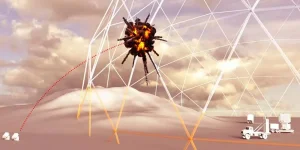- Views: 1K
- Replies: 3

The Council of Scientific and Industrial Research – National Aerospace Laboratories (CSIR-NAL) has achieved a significant breakthrough in stealth technology with the development of two cutting-edge radar-absorbing materials designed for aerospace applications.
These innovations, named NiRaLa-Monolithic Radar Absorbing Laminate and ADRISHYA-RAM Paint, promise to enhance the stealth capabilities of aircraft by reducing their radar cross-section (RCS) and making them less detectable by enemy radar systems.
NiRaLa: A Leap Forward in Radar-Absorbing Structures
NiRaLa, which stands for "Nirantar Radar Absorbing Laminate," represents a major advancement in radar-absorbing structures (RAS). This indigenously developed technology utilizes an aerospace-grade, multilayer epoxy resin-based composite. It is effective in the X-band (8-12 GHz), a crucial frequency range for many military radar systems.NiRaLa offers an impressive absorption rate of 80-99%, providing more than 10dB of RCS reduction. It can withstand temperatures up to 180°C and has passed rigorous structural tests, demonstrating its robustness and reliability for real-world applications.
ADRISHYA-RAM Paint: A Versatile Stealth Enhancement Solution
Complementing NiRaLa, ADRISHYA-RAM Paint provides another method for enhancing stealth. Also operating in the X-band, this lightweight paint achieves an absorption rate of 75-90%.It can be easily applied by spraying or with a paintbrush, making it practical for field use. Made from indigenously synthesized raw materials, ADRISHYA-RAM Paint can be applied to both aluminum alloy and carbon fiber reinforced polymer substrates, offering versatility across different aircraft types.
It is also noted for its cost-effectiveness and scalability, crucial factors for widespread adoption in the defence sector.
Impact on Aerospace and Defence
The development of NiRaLa and ADRISHYA-RAM by CSIR-NAL marks a significant step towards strengthening India's stealth technology capabilities. These innovations not only support India's drive for self-reliance in defence manufacturing but also position the country as a contender in the global aerospace technology arena.By reducing the radar signatures of aircraft, these materials can significantly decrease the likelihood of detection, thereby improving the survivability and mission success rate of military operations. These technologies are expected to be used in both new aircraft designs and for retrofitting existing fleets, contributing to strategic air superiority and tactical advantages in modern warfare.


